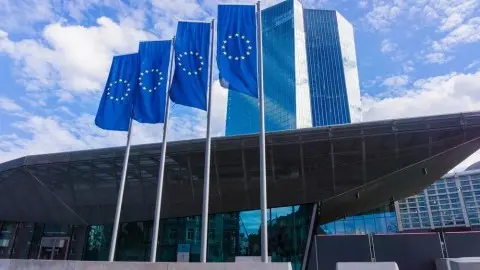Federal Reserve sticks to the plan, despite global risks
Our three key takeaways from the June Federal Reserve (Fed) meeting
Despite the risks presented by trade wars and emerging market difficulties, the Fed appears confident in the outlook and has opted to increase rates by a further 25 basis points. Assuming the economy continues to perform well, and inflation/wage growth continues to pick-up, we expect the Fed to hike a further two times in the second half of this year.
Here are our three main takeaways:
The Fed now forecasts a total of four 2018 rate hikes
With growth rebounding following the typical first quarter soft patch, and inflation continuing to accelerate, we have been pencilling in a total of four hikes for this year. Looking at the latest ‘dot plot’, it seems the Fed is increasingly heading in this direction too.
The closely-watched median 2018 dot has moved up a notch to 2.375, indicating that the committee overall favours two further hikes this year. Previously the Fed had a median of three 2018 rate rises pencilled in, although admittedly the committee were evenly split back in March.
No mention of trade or EM risks suggests Fed focused on domestic story
It’s been a bumpy few weeks since the last Fed meeting. Emerging markets have been buffeted by higher dollar borrowing costs and a stronger USD, while trade tensions have flared. But judging by the latest statement, the Fed remains relatively unfazed. The Fed again simply described the risks to the outlook as “balanced”, with no explicit reference to these external developments.
On emerging markets, Governor Powell said recently that he thinks the effect of US monetary policy on foreign economies is “often exaggerated”. Unlike earlier stages of the Fed’s tightening cycle, where China-related concerns saw the committee take a pause, we doubt that recent overseas developments will have the same effect while the domestic economy is outperforming.
On trade though, Fed speakers have been sounding more cautious, and it’s clear the negative growth impact of any trade war would have a greater impact on interest rates than the effect of higher prices.
But for now at least, firms and consumers appear to have largely brushed off concerns about trade. Until we see what happens next, we suspect the Fed will follow suit.
Powell shakes things up – hawkish or dovish?
Three months into Powell’s tenure, he’s chosen to mix things up a bit.
Firstly, the Fed has dropped its previous guidance that rates were expected to remain “below levels… expected to prevail in the longer run” – something which it had said for quite some time. On one hand, some might view this as the Fed accepting that policy is near ‘neutral’, theoretically meaning we are nearing the end of the current tightening cycle.
But we aren’t so sure. In recent weeks some Fed speakers have suggested rates may need to go “somewhat beyond neutral” in future. We had wondered whether this might be reflected in a higher 2020/’longer run’ dot, although both were kept unchanged on this occasion.
Separately, with the Effective Fed Funds Rate trading towards the upper end of the band, Powell’s committee have opted to tweak the way they achieve their target. By hiking the rate of Interest on Excess Reserves (IOER) by slightly less than before, to 1.95%, it hopes to keep the effective rate closer to the mid-point of the targeted band.
This publication has been prepared by ING solely for information purposes irrespective of a particular user's means, financial situation or investment objectives. The information does not constitute investment recommendation, and nor is it investment, legal or tax advice or an offer or solicitation to purchase or sell any financial instrument. Read more
Tags
Federal ReserveDownload
Download snap
13 June 2018
In Case You Missed It: Confidence and cracks This bundle contains 7 Articles